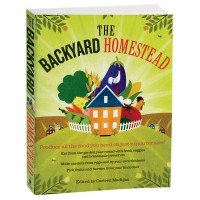

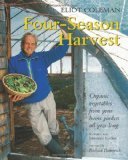
From first sentence to last, Coleman's ( The New Organic Gardener ) book is a delight--an earnest guide written with an impish sense of humor. It will refresh anyone who wants to get the most from a vegetable garden yet doesn't want to devote too much time and energy to the process.
Apparently Coleman thoroughly enjoys every phase of gardening--from planting crops to weeding. Who else has ever suggested, only half in jest, dancing with a hoe? Or keeping a pair of ducks for pest patrol? This is that kind of book.
It's also a book full of valuable information on how to harvest fresh vegetables and salad ingredients literally year-round--yet without an expensive greenhouse or indoor light garden set-up. Coleman combines succession planting (small sowings three or more times, rather than one big endeavor) with cold-frame growing in the winter months. He includes how-tos for building simple cold-frames.
Given the fact that he lives in Maine, his advice seems all the more reliable. He believes in simplicity ("If what I am doing in the garden seems complicated, it is probably wrong"), seasonality (tomatoes in summer, broccoli in fall, mache in February) and diplomacy in the garden (which "has more to teach us than just how to grow food").
Here, his philosophy of organic growing is shared easily. The book concludes with an extensive chapter on the vegetables that comprise his "cast of characters." Illustrated. Read More...
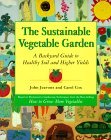
More than 25 years ago, Jeavons wrote the best-selling How to Grow More Vegetables, which sold more than 350,000 copies in seven languages. It was a how-to book on high-yield, biologically intensive food-raising techniques. His new book, coauthored by Carol Cox, is a somewhat simpler book written for gardeners trying biointensive gardening for the first time. The focus is on the soil; and a good way to ensure sustainable soil fertility, the authors say, is the biointensive method of growing...
Greening the Garden was a very interesting book because it discussed the non main stream vegetables such as quinoa, amaranth, sunchokes, comfrey, dried beans, soybeans, fava beans, and others. It was a nice introduction to what I consider the lesser used, if not lesser known, vegetables.
This isn't another uninformative how to grow a tomato book. It does discuss growing certain vegetables as I stated above, but what I really enjoyed, and was surprised to find in the book, were the writings concerning our environment, our current food productions inpact on earth and the inpact on people's health who consume these foods (both meat and vegetable).
This book was a wonderful read on environmental problems such as considering how much food we get from one cow per acre compared to if we grew vegetables on that one acre. Per pound the vegetables would far out beat the cow and would supply food for that many more people. There are discussions on chemical use and how Indonesia is one of the first to ban chemical use and has reclaimed its rice crops by doing so. The author gives us hope that our seed diversity which has been declining over the years may not be gone forever. Apparently the author found some genetic diversity in some bean seeds he's been saving. This, as he says, is just a reminder that genes from the past may still be present in todays seeds. One more reason to save and protect our open pollinated seeds. Read More...
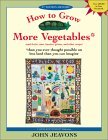
For over 30 years, this pioneering work has continued to revolutionise
food production around the world. Written for the individual gardener,
HOW TO GROW MORE VEGETABLES is the bible on mini-farming, a method that
produces high yields of food crops in very small spaces while nourishing
the soil and reducing the use of chemicals. This newly revised and
significantly expanded edition incorporates the latest techniques and methods.
Read More...
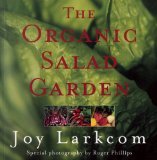
Joy Larkcom's Salad Garden is one of the most influential gardening books ever published. It has been fully revised and updated as the Organic Salad Garden. It contains everything you need to know about growing over 200 salad plants. It covers all aspects from site preparation to harvesting, and detailing special techniques for growing salad plants, and containing full descriptions of all the main salad vegetables with advice on the best varieties for growing and for flavor - as one reviewer puts it .... I simply cannot and will not hesitate to purchase it.
One review at Amazon that I agree with whole heartedly is "One of the four food books of the century." It is most certainly a vegetable gardening book to treasure!
Buy This Book
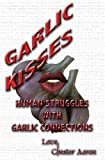
Part memoir, part philosophy, part cookbook, all delight: Garlic Kisses offers this gift: memories of a life of laughter and tears, seasoned with garlic and tempered with hope.Read More...


 The food industry's digusting secrets exposed. How to protect yourself.
Click Here!
The food industry's digusting secrets exposed. How to protect yourself.
Click Here!
